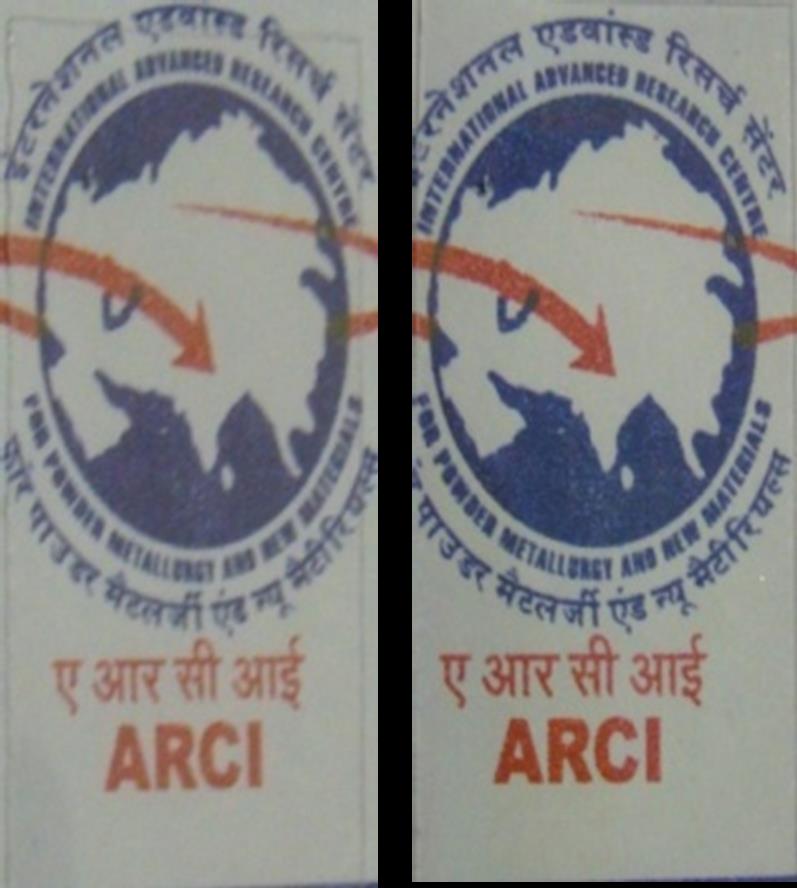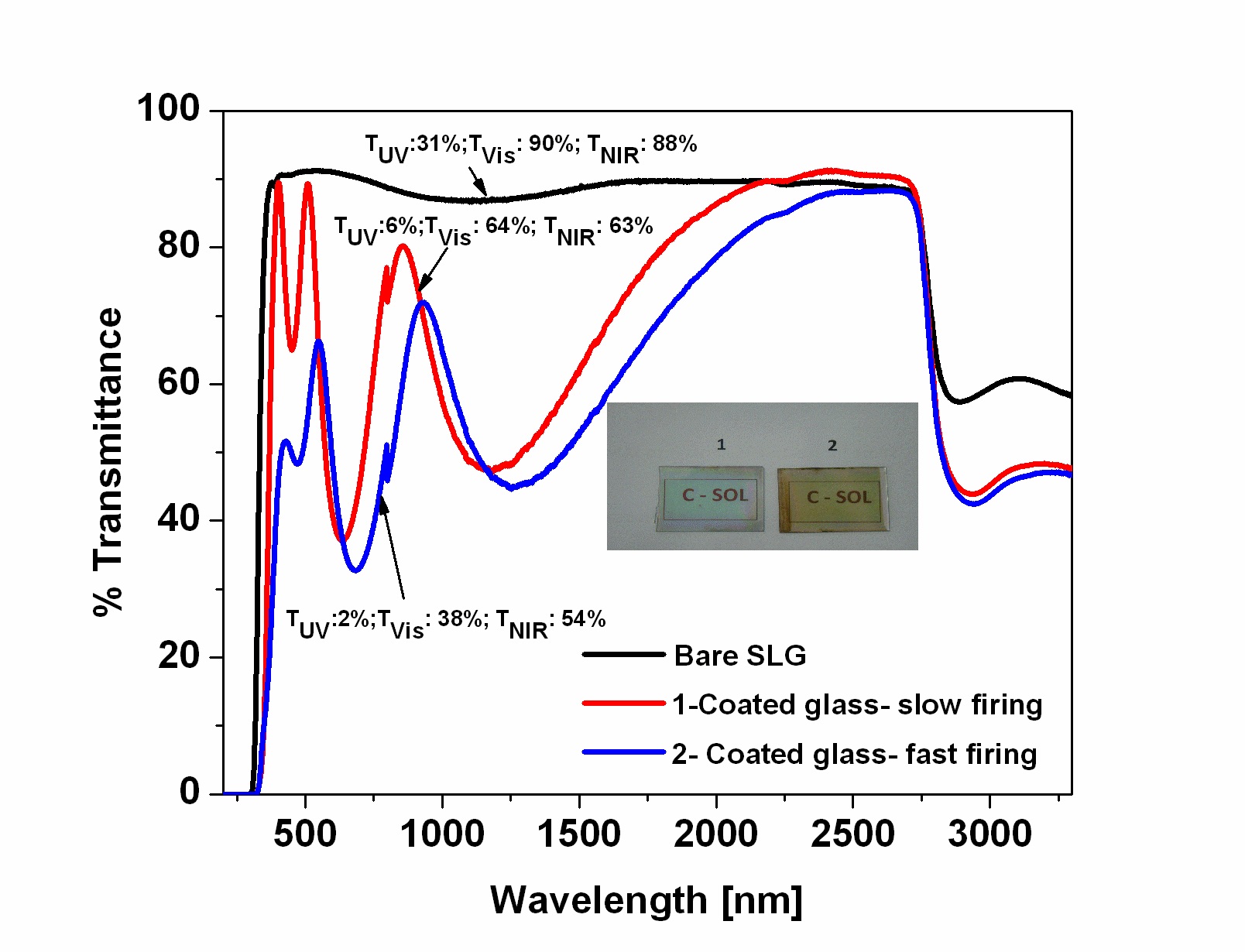Architectural
Silica Aerogel Sheets for Thermal Insulation Application
Overview
ARCI has embarked on world class product development, “Silica aerogel flexible sheets” for thermal insulation application with the objectives of indigenization under the ‘Make in India’ initiative. Silica aerogel is an ultra-low density nanoporous material known for its best thermal insulation property in wide range of temperatures from cryo to high. In spite of all the potential benefits of aerogels, its commercial use was restricted due to its fragile nature. ARCI’s product made up of fiber-aerogel composite overcomes this limitation by making it mechanically stronger and flexible. The silica aerogel in this product has a special property of infra-red radiation reflection which helps to minimize the radiation by thermal conduction at high temperature. The product possesses all the properties ideally required as the best thermal insulation material such as low thermal conductivity, corrosion resistance, chemical resistance, good compressive strength, light weight, moisture resistance, fire resistance etc
Key Features
- Thickness : 5 – 25 mm
- Thermal stability : - 50to 800 oC
- Thermal conductivity : 0.04W/mK at RT (Transient plane method)
- Density : 0.2 g/cc
- Good Mechanical strength: Can take ~ 80 N force and elongation of 5mm
- Neutral in pH (water vapours passing through show pH 7) Non-corrosive
- Hydrophobic; if immersed in water for 5 hours, < 1% water is retained in the sheet
- Breathable
Potential Applications
- Thermal insulation in sectors like
- Industrial like power plants, oil & gas industry
- Architectural
- Automotive
- Defence and Aerospace
- Heat / cold storages
Intellectual Property Development Indices (IPDI) 
- Aerogel sheet production up-scaled to 300 x 3000 mm size
- Tailored to achieve all the characteristics for ideal insulation material
- Technology transferred to an Indian Industry for commercialization
| Status | 1 | 2 | 3 | 4 | 5 | 6 | 7 | 8 | 9 | 10 |
Major Patents / Publications
Major Patents
- Indian Patent No. 305898 : An improved process for producig silica aerogel thermal insulation product with increased efficiency, Neha Hebalkar,
- International patents filed in Russia, UAE, South Africa, USA, Malaysia, Japan, China, Mexico, Brazil, Indonesia
Major Publications
Silica Aerogel Granules and Powders for Thermal Insulation Application
Overview
Key Features
- Granule size : ~ 1 mm (Tuneable)
- Powder size: ≥ 10 µm
- Packing density: 0.03 - 0.07 g/cc
- Thermal stability : - 200 to 800 C
- Surface area: ~ 800 – 1500 m 2 /g
- Thermal conductivity: 0.03 W/mK at RT (transient plane method)
- Hydrophilic or hydrophobic, as per requirement
- Colour : Translucent or opaque or black (depending on functionality)
Potential Applications
Thermal insulating
- Paints
- Building material such as cement, bricks, wall plaster etc
- Window panels
- Textiles
- Heat / cold storages
Technology Readiness Level:
- 1kg of silica aerogel granules can be produced in one batch from presently available lab production facility with properties mentioned above
Intellectual Property Development Indices (IPDI) 
- Basic concepts and understanding of underlying scientific principles
- Short listing possible applications
- Research to prove technical feasibility for targeted application
| Status | 1 | 2 | 3 | 4 | 5 | 6 | 7 | 8 | 9 | 10 |
Major Patents / Publications
Major Patents
Major Publications
- Indian Patent No. 290370 : Improved method for producing carbon containing silica aerogel granules, Neha Hebalkar
Scratch-Resistant, Single Layer Antireflective Coatings on Glass and Plastics
Overview
Key Features
- Visible light transmission ~ 97%
- Haze change after 1000 cycles of crockmeter testing using fabric: <2%
- Can be applied on Polycarbonate, PMMA and window glass
- Eco-friendly
- Low temperature ultraviolet (UV)/near-infrared (NIR) curability
- Amenability for deposition on large areas with automation
Potential Applications
- Smart windows
- Automobile windows
- Transparent glass for photovoltaic modules
- Protective glass cover for solar thermal heat collection elements
- Ophthalmic lenses
- Helmet visors
- Display glass for showcase
- Aircraft canopy
Intellectual Property Development Indices (IPDI) 
- Performance and stability validated at laboratory scale on coupons
- Scale-up and prototype validation to be carried out
| Status | 1 | 2 | 3 | 4 | 5 | 6 | 7 | 8 | 9 | 10 |
Major Patents / Publications
Major Patents
- An improved composition for antireflective coating with improved mechanical properties and a process of coating the same, Indian patent application number 2330/DEL/ 2013 dtd 05-08-13.
- S. Pavithra and R. Subasri, Sol-gel derived single layer zeolite-MgF2 composite antireflective coatings with improved mechanical properties on polycarbonate, Journal of Coating Science and Technology 1 (2014) 8-16.
Solar Control Coatings on Glass
Overview
Key Features
- Visible light transmission -35-65% vis-a -vis 90% for bare glass
- UV transmittance - 2% vis-a -vis 30% for bare glass
- NIR transmittance - 55% vis-a -vis 85% for bare glass
Potential Applications
- Architectural window glass
- Automobile side window glass/windshields
Intellectual Property Development Indices (IPDI) 
- Performance and stability are validated at laboratory scale
- Proof of concept successfully completed and scale-up can be demonstrated based on the market demand
| Status | 1 | 2 | 3 | 4 | 5 | 6 | 7 | 8 | 9 | 10 |
Major Patents / Publications
Major Patents
- An improved process to make coating compositions for transparent, UV blocking coatings on glass and a process of coating the same, Indian patent application number 1152/DEL/2014 dtd 29-04-14
- S. Manasa, R. Subasri, Effect of heat treatment on the optical properties of sol-gel derived, fully dielectric solar control coatings on glass, J. Coatings Technology and Research 13 (2016) 623-628.
Decorative Nanocomposite Coatings on Glass and Ceramics
Overview
There are principally two different methods to achieve intense colors in bulk glasses; one by incorporating transition metal cations into the glass network, which absorb visible light due to electronic transitions in their atomic orbitals and the other by addition of metal salts of Au, Ag or Cu, which are reduced to the metallic state during melting and segregate from the glass matrix while cooling. The colouring of glass via melting techniques has some unique problems with respect to reproducibility, toxicology during production & recycling and economics. When differently coloured bottles are mixed during the re-melting process for recycling, desired colours are very hard to obtain. Traditionally, the decoration of crystal glasses is performed by laborious manual techniques, which are costly and do not meet modern market requirements. Sol-gel coloured/decorative coatings are thin, low temperature curable, eco-friendly alternatives and are easy to recycle.
Key Features
- Tuneable transmission and refractive index of the coatings
- Colour of the coating can be controlled by suitable choice of dopants
- UV, temperature stable and weather proof
- Easy recyclability of glass due to complete degradation of organic constituents at low temperatures
- Opaque coatings possible with high temperature durability
Potential Applications
- Architectural applications: Coloured glasses/Tiles for aesthetics or decoration
- Scratch resistant, coloured coatings for glass bottles used in various industries for storing perfume, medicines etc
Intellectual Property Development Indices (IPDI) 
- Performance and stability are validated at laboratory scale
- Scale-up and large area performance evaluated
| Status | 1 | 2 | 3 | 4 | 5 | 6 | 7 | 8 | 9 | 10 |
Major Patents / Publications
Major Patents
- Sol-Gel Nanocomposite Hard Coatings, K.R.C. Soma Raju and R. Subasri in "Anti-abrasive nanocoatings: Current and future applications", (ed.) M . Aliofkhazraei, Woodhead Publishing (an imprint of Elsevier), UK, 2015, pp 105-136.
- R.Subasri, C.S.Madav, K.R.C.Somaraju and G.Padmanabham, “Decorative hydrophobic sol-gel coatings densified using near-infrared radiation” Surface and coating technology, vol 206 (8-9), p 2417-2421, 2012.















